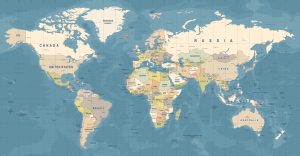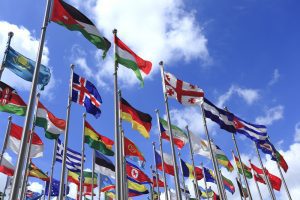There are 193 recognized countries in the world. Some territories aren’t yet fully independent while others are about to get state status.
Since 1990, almost 30 new countries appeared on the world map. But for a territory to become fully independent it has to be recognized by the UN.
A country is defined as a territory of people with clear borders, a government, and a common culture. But in reality, this isn’t always the case.
Many countries don’t have a unique culture as they have fallen under different political agendas to be independent territories. Some territories even declared independence within a state.
193 states are recognized by the UN
The United Nations is the international regulatory body that recognizes or dismisses a territories claim as a country. There are 193 countries and states part of the UN.
For a new country to appear on the map, these states have to offer their veto. From here, there are a few problems, mainly tied to local political interests.
The Vatican and Palestine aren’t members of the UN. There are only partially states and they aren’t fully recognized by all UN members. Taiwan is another territory that is not yet seen as a full nation. China isn’t recognizing its territories as an independent.
Most new countries that appeared after 1990 are the former Soviet Union and Yugoslavia territories. Kosovo is an example of a territory claiming independence only for it to be revoked later.
After Serbia didn’t offer its veto for these newly independent states, other countries followed and it failed to become a fully independent country.
Cyprus also has an unclear international status. This island has all of the premises to be a full state, such as an independent culture or a culture vastly influenced by the Greek culture.
Yet, Turkey has its interest in Northern Cyprus which has the status of the entire island unclear.
Transnistria is yet another European territory with unclear status. This small land is claimed to be funded by Russian separatists that are willing to break it off from Moldova.
But even Moldova is a Romanian territory and it doesn’t have a unique culture according to the Oxford dictionary definition of a state.
Russian interference is likely to keep this small European country in an unclear status and even potentially break off its territories further.
Partially-recognized states
The Republic of Somaliland is another interesting state that doesn’t have international recognition. War started between this territory and the main state of Somalia in the ‘90s.
But this new self-proclaimed state turned out to have its government and even its currency. Today, some people move from Somalia to the Republic of Somaliland for it has better stability.
However, this new Somali territory isn’t recognized by the UN, and, likely, it will never become a state that is recognized and accepted by all UN members.
Nagorno-Karabach is a similar territory between Armenia and Azerbaijan that isn’t likely to get international recognition.

















